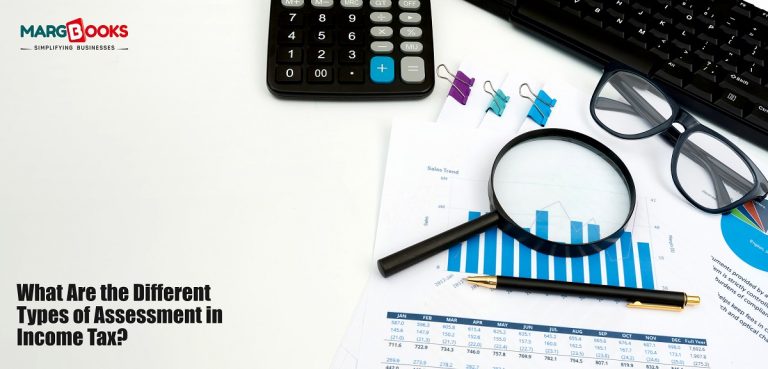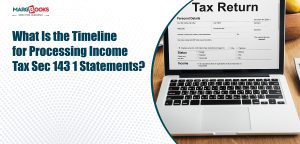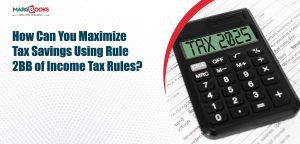Paying income tax is an essential part of being a responsible citizen in India. But filing your return is only half the story. Once you’ve filed your return, the Income Tax Department steps in to assess it and this is where things get interesting.
Whether you’re a business owner, a salaried professional, or a tax consultant, understanding the types of assessment in income tax can help you stay compliant and avoid unnecessary trouble.
In this blog, we’ll walk you through the different kinds of assessments carried out under the Income Tax Act, how they work, and how tools such as online billing software, GST billing software, and platforms, MargBooks, can simplify your tax journey.
Why Income Tax Assessment Matters?
The Income Tax Department carries out assessments to ensure that the income declared by a taxpayer is correct and the tax paid is accurate. It’s not just about catching errors or fraud; it’s also about giving taxpayers a chance to clarify or revise their records if necessary.
So let’s dive into the major types of assessment in income tax applicable in India.
1. Self-Assessment (Section 140A)
This is the assessment you do on your own before filing your return.
Key Points:
- You calculate your total income, tax payable, and pay any dues before submitting your Income Tax Return (ITR).
- This type of assessment includes interest and penalties (if any) for late payment.
- It’s the most straightforward and most common form of assessment.
Pro Tip: If you’re using tools, MargBooks, which combines accounting with tax calculation, you can compute your self-assessment tax more accurately.
2. Summary Assessment (Section 143(1))
After you file your return, the system processes it automatically and issues an intimation.
Highlights:
- It checks for arithmetical errors, incorrect claims, and mismatches in income or TDS data.
- If there’s a refund or additional tax payable, you get an intimation via email or SMS.
- No human intervention is involved; it’s completely automated.
Using GST billing software that integrates directly with your accounting system can reduce errors and ensure better data accuracy during this assessment.
3. Scrutiny Assessment (Section 143(3))
This is a detailed assessment where your return is closely examined by a tax officer.
When does it happen?
- If the department suspects under-reporting of income or discrepancies.
- You’ll receive a notice asking for documents and explanations.
What does it involve?
- Submission of bank statements, invoices, investment proofs, etc.
- Personal or professional appearance before the tax officer may be required.
Having access to your records through online billing software like MargBooks can make responding to such notices a lot easier and faster.
4. Best Judgement Assessment (Section 144)
This is applied when:
- You don’t file your return on time.
- You don’t respond to notices.
- The information provided is inadequate.
In such cases:
- The Assessing Officer uses available information to estimate your income and tax payable.
- You have little say in the matter once this happens.
To avoid this, always maintain proper documentation. Software solutions, MargBooks help you generate and store accurate invoices, track your GST filings, and maintain compliance.
5. Income Escaping Assessment (Reassessment) (Section 147)
If the department finds out later that you’ve missed declaring some income, they can reopen your assessment.
Conditions:
- New information or evidence comes to light.
- The income escaped is significant.
Timeline:
- The department can reopen cases for up to 10 years in some situations.
Again, organized record-keeping is your best defense. Regular use of GST billing software ensures your taxable turnover and output tax are reported, reducing the chances of discrepancies.
6. Protective Assessment
Though rare, this is used in cases of doubt, especially when income ownership is under question.
For instance, if there’s a dispute about whether income belongs to person A or person B, the department may make a protective assessment for both to secure revenue.
How MargBooks Makes Tax Compliance Simpler?
MargBooks is a cloud-based accounting solution that not only helps you maintain books of accounts but also integrates seamlessly with GST and income tax processes.
Key Benefits:
- Online Billing Software: Generate invoices, quotations, and bills from anywhere.
- GST Billing Software: Auto-calculate GST, generate GSTR-1, GSTR-3B, and e-invoices.
- Easy ITR Preparation: Download financial reports needed for filing your income tax return.
- Secure Cloud Access: Your financial data is backed up and always available.
Whether you’re a CA managing clients or a small business trying to stay compliant, MargBooks simplifies every step of the way.
Conclusion
Understanding the types of assessment in income tax isn’t just for accountants—it’s essential for anyone who files taxes in India. From self-assessment to scrutiny and reassessment, each type serves a specific purpose in the broader goal of maintaining tax fairness.
And in today’s digital world, having the right tools can make a world of difference. Investing in the right online billing software and GST billing software, such as MargBooks, can ensure you’re not only compliant but also stress-free during assessment time.




